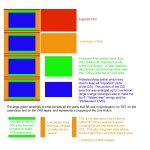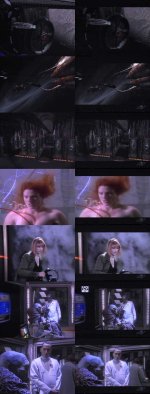However, your useful images have shown another issue, and that is that the live action shots (in this case from S5's "Secrets of the Soul") appear to have been cropped slightly also. That is of concern...
Not necessarily ... it is a while since this was explained to me, so I may be remembering wrongly, but I was led to understand that B5's live action was shot in such a way to enable cropping to both TV's then standard 4:3 ratio and also to widescreen 16:9 ratio - the same way movies are shot.
The end result is an image that requires some cropping of the original filmed image (which is larger than both 4:3 and 16:9 ratio) whichever ratio it is being shown in. Essentially you have one large image that is cropped to the appropriate shape for the visual ratio you want to obtain - generally leaving the top and bottom of the image as background only so that it doesn't matter if it gets cropped out.
JMS was aware of the oncoming boom in widescreen television, and B5 was therefore shot with widescreen in mind, but attempting to ensure that nothing of importance would be lost in cropping it for a 4:3 broadcast.
It is not true that a widescreen TV show is shot in 16:9 ratio and the whole image is then shown on a widescreen TV - whichever way it is done, some cropping is required, and there is no reason for concern on that point.
The problem with the CGI (which, to be honest, on my DVD player and 28in 4:3 television at home has never been a problem), is that it was originally rendered to 4:3, as this was the only way it could be done using the tech available, so in order to create a 16:9 image the original has to be enlarged to the appropriate size and then the top and bottom just cropped away to make the picture the right shape. If the action fills the screen at 4:3, it is inevitable therefore that some will be lost in the process.
HTH, and HIHRIR (Hope I Have Remembered It Right).



